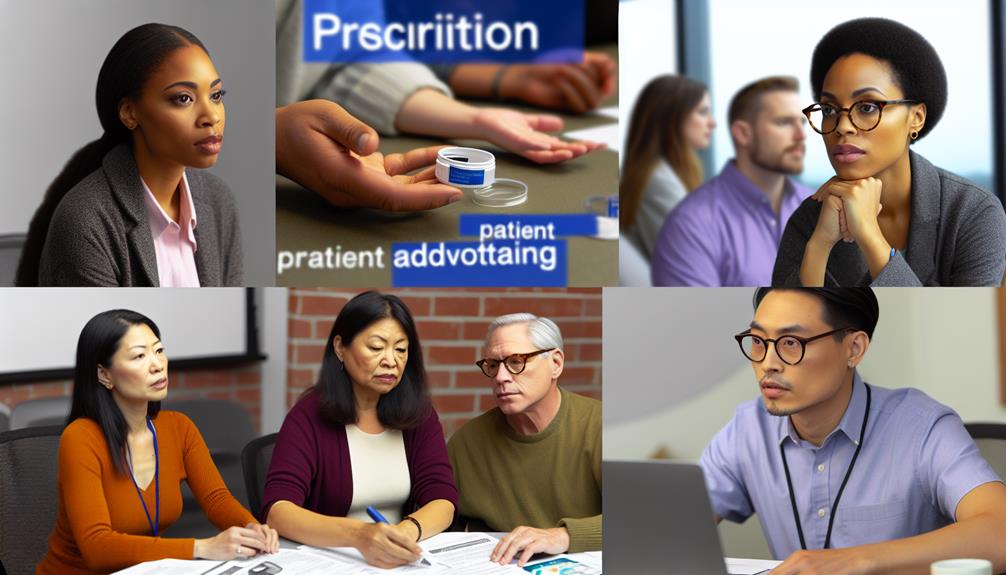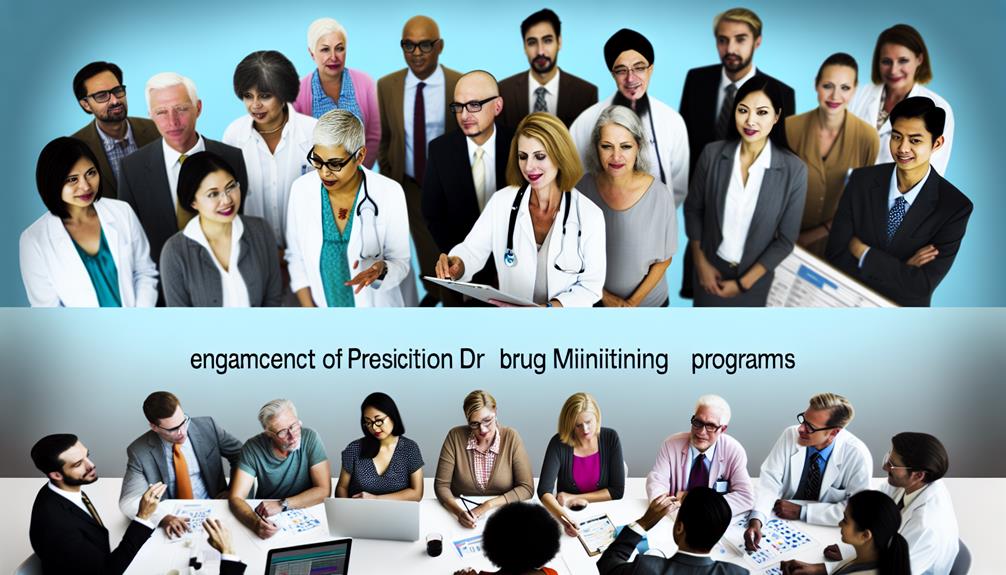In the realm of prescription drug monitoring, patient advocacy wields a powerful influence, akin to a gentle nudge that can steer the course of healthcare policies and initiatives. Patient advocacy, with its steadfast commitment to the well-being and rights of individuals, serves as a beacon of hope and catalyst for change within the complex landscape of drug monitoring.
But how exactly does patient advocacy shape the world of prescription drug monitoring? How does it collaborate with monitoring programs to address the pressing issue of prescription drug abuse? And most importantly, what impact does patient advocacy have on the effectiveness of these monitoring programs?
Prepare to embark on a journey of exploration into the realm of patient advocacy and its profound influence on prescription drug monitoring.
Importance of Patient Advocacy

Patient advocacy plays a crucial role in ensuring the well-being and rights of individuals receiving prescription drug monitoring. Patient empowerment is a key aspect of patient advocacy, as it aims to give patients the knowledge, skills, and confidence to take an active role in their healthcare decisions. By empowering patients, they're better equipped to participate in discussions about their prescription drug monitoring and make informed choices about their treatment options.
Moreover, patient advocacy also influences healthcare policy. Advocacy groups work to raise awareness about the importance of prescription drug monitoring and push for policies that protect patients' rights and improve access to necessary medications. They advocate for stricter regulations on the prescribing and dispensing of controlled substances to prevent abuse and misuse.
Additionally, patient advocacy in prescription drug monitoring helps ensure that patients are receiving appropriate and safe medications. Advocates work to promote transparency in the healthcare system, advocating for patients' access to their own prescription drug monitoring data and encouraging healthcare providers to involve patients in the decision-making process.
Role of Advocacy Groups in Drug Monitoring
Advocacy groups play a vital role in ensuring the effectiveness and integrity of prescription drug monitoring systems. These groups collaborate closely with monitoring programs, bringing their expertise and commitment to patient rights and safety.
Here are three key ways in which advocacy groups contribute to drug monitoring:
- Education and awareness: Advocacy groups work tirelessly to educate the public and healthcare professionals about the importance of prescription drug monitoring. They raise awareness about the risks of prescription drug misuse and the benefits of monitoring systems in preventing abuse and diversion.
- Policy development and advocacy: Advocacy groups actively participate in the development of policies related to drug monitoring. They advocate for legislation that strengthens monitoring programs, enhances patient privacy, and ensures access to appropriate pain management for individuals with legitimate medical needs.
- Support and empowerment: Advocacy groups provide support and resources for individuals affected by prescription drug misuse and addiction. They empower patients and their families to navigate the complexities of the healthcare system and to advocate for their rights and needs.
Collaboration Between Advocacy and Monitoring Programs

Collaboration between monitoring programs and advocacy groups is essential for the successful implementation and operation of prescription drug monitoring systems. Advocacy collaborations play a crucial role in ensuring patient support and promoting the effective use of these monitoring programs.
By working together, monitoring programs and advocacy groups can create a more comprehensive approach to drug monitoring. Advocacy groups can provide valuable insights into the needs and concerns of patients, while monitoring programs can offer data and expertise on prescription drug usage. This collaboration allows for a more patient-centered approach, ensuring that monitoring systems are designed to address the specific challenges faced by patients.
Patient support is a key focus of advocacy collaborations. Advocacy groups can help educate patients about the importance of prescription drug monitoring and how it can improve their healthcare outcomes. They can also provide resources and assistance to patients who may be struggling with prescription drug misuse or addiction.
Addressing Prescription Drug Abuse Through Advocacy
Addressing the issue of prescription drug abuse requires a multifaceted approach that involves the active engagement of various stakeholders. Patient advocacy plays a crucial role in this effort by focusing on patient education and legislative support. Here are three key ways in which advocacy can help address prescription drug abuse:
- Patient education: Advocacy groups can play a vital role in educating patients about the risks and proper use of prescription drugs. By providing information on the potential dangers of misuse and abuse, they empower patients to make informed decisions about their medication. This education can help prevent the misuse of prescription drugs and promote responsible usage.
- Legislative support: Advocacy organizations can advocate for stronger legislation and policies aimed at curbing prescription drug abuse. By working with lawmakers, they can push for measures such as stricter prescribing guidelines, improved monitoring programs, and increased access to addiction treatment. Through their efforts, advocacy groups can help create a regulatory environment that effectively addresses the issue of prescription drug abuse.
- Awareness campaigns: Advocacy groups can raise public awareness about prescription drug abuse through targeted campaigns. By sharing stories of those affected by addiction and highlighting the importance of responsible medication use, they can help reduce the stigma associated with substance abuse and encourage individuals to seek help when needed.
Impact of Advocacy on Monitoring Program Effectiveness

To understand the effectiveness of prescription drug monitoring programs, it's important to consider the impact that patient advocacy has on these initiatives. Patient advocacy plays a critical role in shaping and improving monitoring programs by advocating for better policies, increased access to healthcare, and improved patient outcomes.
Advocacy strategies employed by patient advocates include raising awareness about the importance of prescription drug monitoring programs, promoting the use of electronic health records to facilitate data sharing, and urging policymakers to allocate resources for monitoring program implementation and maintenance. By engaging with policymakers, healthcare providers, and the public, patient advocates can influence the development and implementation of effective monitoring programs.
The impact of patient advocacy on monitoring program effectiveness is significant. Research has shown that states with strong patient advocacy initiatives have higher rates of program adoption and implementation. These programs have been successful in identifying and preventing prescription drug misuse, reducing doctor shopping, and decreasing opioid-related overdose deaths.
Furthermore, patient advocacy has led to the integration of monitoring programs into clinical workflows, ensuring that healthcare providers have access to real-time data to inform their prescribing decisions. This integration has resulted in improved patient outcomes, such as reduced medication errors, increased adherence to treatment plans, and decreased drug diversion.








